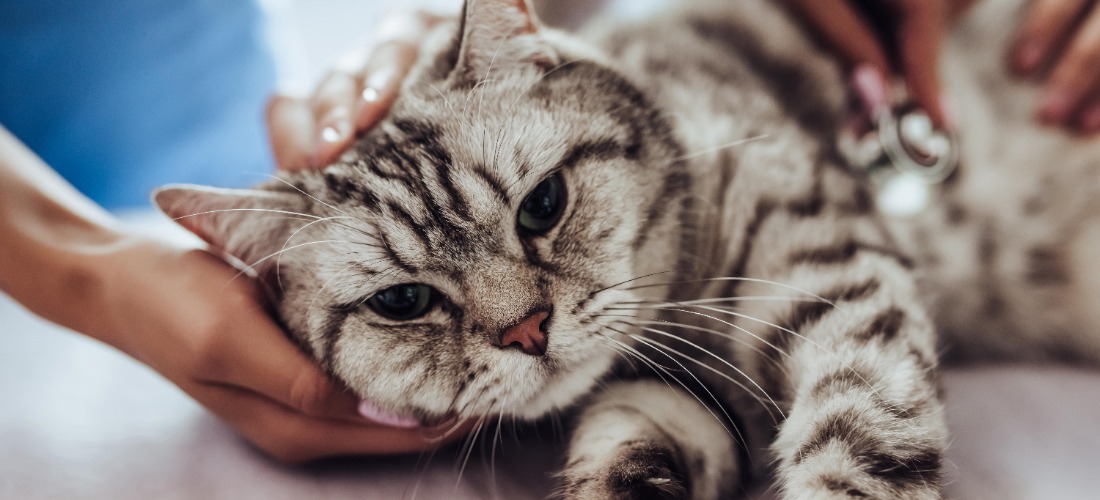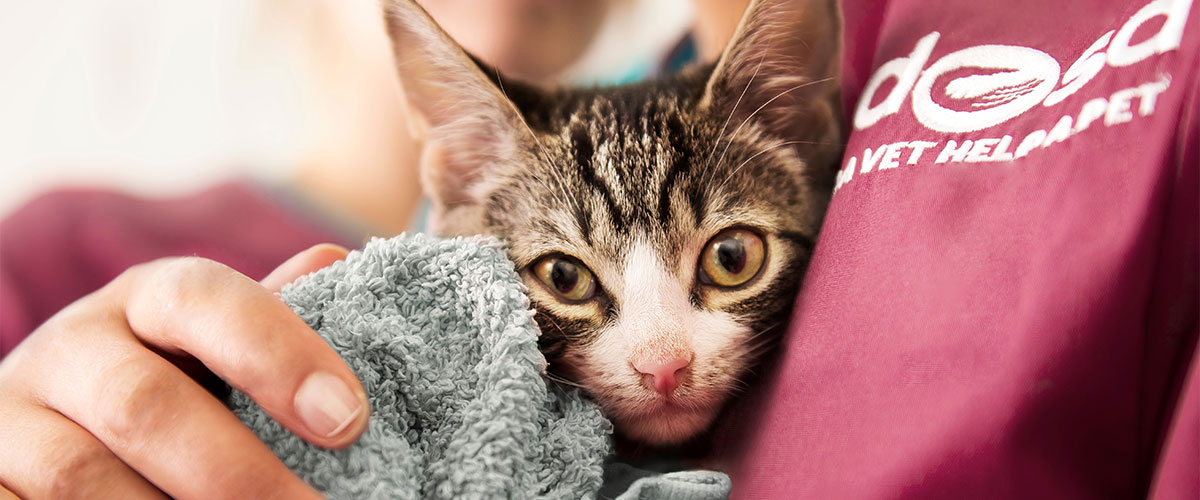Pancytopenia in Cats
Overview
- ‘Pancytopenia’ is when the body develops dangerously low levels of certain blood cells (red blood cells, white blood cells, and platelets).
- It’s a rare problem that can be caused by a number of different conditions including toxin exposure, certain infectious diseases and types of cancer.
- Symptoms of pancytopenia tend to be vague and mild at the start, before quickly progressing to becoming severe and life threatening.
- Pancytopenia tends to result in bleeding problems, anaemia, and development of severe infections.
- Treatment for pancytopenia often involves intensive care, but sadly, in many cases it’s fatal.

‘Pancytopenia’ is a term we use to describe dangerously low numbers of blood cells. It’s a rare problem that can develop if:
- Something stops blood cell production - bone marrow (which sits inside some of the bones in the body) produces blood cells and send them out into the blood. If something damages the bone marrow or stops it working properly, for example because of a toxin or cancer, then it won’t be able to produce enough cells and this can lead to pancytopenia.
- Something destroys blood cells - if blood cells are destroyed or used up by the body, and the bone marrow can’t produce enough to replace them, then this can cause pancytopenia. This could be due to an infection in the blood cells, certain toxins or an auto-immune disease (where the body destroy its own cells).
Some of the specific conditions that cause pancytopenia in cats include:
Blood cells are essential for life, so unfortunately, pancytopenia is a very serious problem that is fatal in many cases. The three main blood cells that are affected include:
- Red blood cells - that carry oxygen round the body
- White blood cells - immune cells that fight infection
- Platelets - that help stop bleeding by forming clots (a good type of clot!)
If your cat has pancytopenia, they are likely to start suffering from anaemia (low red blood cells), clotting/bleeding problems, and serious infections (all caused by a lack of the cells listed above).
Symptoms
Symptoms of pancytopenia tend to start vague and mild, before quickly becoming serious and potentially life threatening. Symptoms include:
- Low energy/weakness
- Not eating
- Pale gums
- Bleeding from the gums, nose, eyes, mouth, anus or vagina
- Blood in the poo or pee
- Blood in the vomit
- Unexplained bruising
- Repeated or severe infections
- Fever
- Collapse
Diagnosis
Pancytopenia is usually diagnosed with a blood test called a ‘complete blood count’, which tells you the number of each type of cell within the blood. If your cat is diagnosed with pancytopenia, they may also need other tests (blood test/urine tests/scans) to try to find out why they have developed it. Your vet may also discuss a bone marrow biopsy, which is a specialist procedure to look at the bone marrow (the part of the body responsible for producing blood cells).
Treatment
Treatment for your cat’s pancytopenia depends on what’s caused it and how severely it’s affecting them. They will need treatment for their lack of blood cells, but also for the condition that has caused the cells to become depleted in the first place. They are likely to need intensive care, a fluid drip, a blood transfusion, and medications such as antibiotics for infections.
Unfortunately, many of the diseases that cause pancytopenia are very serious or even life threatening, so some cats pass away even with intensive treatment. Sadly, you may need to consider putting your cat to sleep, especially if they are in pain or suffering.
Cost
Treatment for pancytopenia can be very expensive because it’s usually an emergency condition that requires intensive care. It’s important to speak openly to your vet about your finances, the cost of treatment, as well as what you think is right for your cat. There is often more than one treatment option, so if one doesn’t work for you and your cat then your vet may be able to offer another.
When you welcome a new cat into your life, consider getting Cat Insurance straight away before any signs of illness start. This will give you peace of mind that you have some financial support if they ever get sick.
Published: June 2021
Did you find this page useful?
Tell us more
Please note, our vets and nurses are unable to respond to questions via this form. If you are concerned about your pet’s health, please contact your vet directly.
Thank you for your feedback
Want to hear more about PDSA and get pet care tips from our vet experts?
Sign up to our e-newsletter
Written by vets and vet nurses. This advice is for UK pets only. Illustrations by Samantha Elmhurst.

